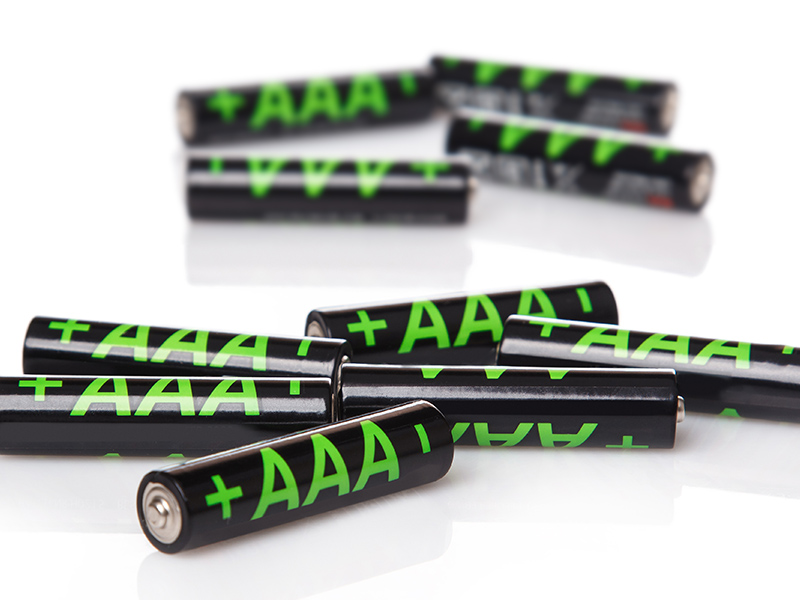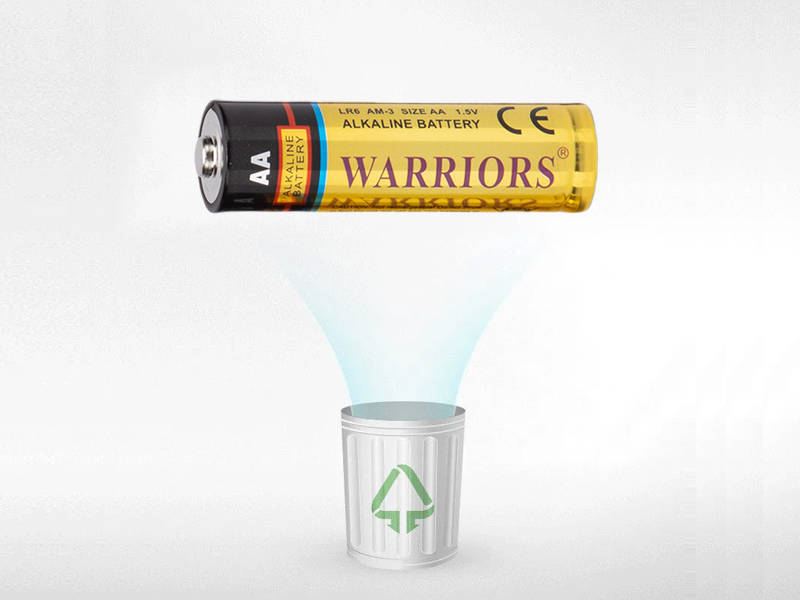A comprehensive analysis of 1.5V alkaline batteries
In modern life, batteries power countless devices, from daily household appliances to high-tech electronic products. Among them, 1.5V batteries have become the mainstream choice due to their strong versatility and wide range of applications. This guide will introduce the types, working principles, applicable scenarios and maintenance methods of 1.5V batteries in detail to help you better choose and use batteries.
Part 1. What is a 1.5V battery?

A 1.5V battery is an electrochemical cell with a nominal voltage of 1.5 volts. Widely used in a variety of everyday electronic devices, its rated voltage is the voltage difference between the positive and negative voltages of the battery, which directly affects the normal operation of the device. Due to its performance and reliability, the 1.5V battery has become an ideal power source for portable devices.
Key Features:
- Voltage:1.5 volts is standard.
- Chemistry:Common chemistries include alkaline, zinc-carbon, and lithium.
- Size:Available in AA, AAA, C, D, and 9V sizes.
- Rechargeability:Some types are rechargeable (like Lithium-ion rechargeable batteries), while others are disposable (like AA LR6 Alkaline Battery ).
What are the types of 1.5V batteries?
Alkaline batteries: Alkaline batteries are one of the most popular types of 1.5V batteries. They are known for their long life and high energy density. Their advantages are long-lasting, wide market and easy to buy, but the disadvantage is that they are not rechargeable.
Carbon batteries: Carbon batteries are another common 1.5V battery, mainly used in low-power devices. The price is cheaper than alkaline batteries, but the life is shorter and the stability is poor under high load.
Lithium batteries: Lithium batteries have added advantages over alkaline batteries and zinc-carbon batteries, with longer service life and higher energy density. The disadvantage is that the price will be higher than alkaline carbon batteries, and some models are not available in full size.
Part 2. How do 1.5V batteries work?
1.5V batteries work by generating electricity through an electrochemical reaction that occurs inside them. When the battery is connected to an electronic device, a chemical reaction occurs between the anode (negative electrode) and the cathode (positive electrode), which generates electricity.
What are the parts of a 1.5V battery?
- Anode: In alkaline batteries, the anode is usually made of zinc, which oxidizes during discharge.
- Cathode: Usually made of manganese dioxide or lithium compounds, the cathode is reduced.
- Electrolyte: This substance facilitates the movement of ions between the anode and cathode, allowing the chemical reaction to generate electricity.
Part 3. What are the common applications of 1.5V batteries?
- Remote Controls: Remote controls for TVs, air conditioners, and other appliances use AA or AAA alkaline batteries.
- Keyboard and Mouse: Wireless mice and wireless keyboards use 1.5V alkaline batteries.
- Toys: Most battery-powered toys rely on 1.5V batteries for power.
- Flashlights: Portable flashlights typically use 1.5V batteries for illumination.
- Smoke Detectors: Most smoke detectors require 1.5V batteries for reliable operation.
Part 4. Lifespan of 1.5V Alkaline Batteries
The lifespan of 1.5V Alkaline batteries depends on several factors:
- Battery Type: Alkaline batteries typically last longer than rechargeable NiMH batteries when used in low-power devices.、
- Usage Pattern: Devices that require more power will drain the battery faster than devices that use less power.
- Storage Conditions: Batteries stored in a cool, dry place will last longer than batteries exposed to heat or humidity.
What is their average lifespan?
Alkaline batteries have a shelf life of 10 years.
| Model | Capacity | Voltage | Expiration date |
| LR20-D | 2100min | 1.5V | 10 years |
| LR14-C | 1080min | 1.5V | 10 years |
LR6-AA |
200min | 1.5V | 10 years |
| 300min | 1.5V | 10 years | |
| 330min | 1.5V | 10 years | |
| 360min | 1.5V | 10 years | |
| 420min | 1.5V | 10 years | |
LR03-AAA |
100min | 1.5V | 10 years |
| 120min | 1.5V | 10 years | |
| 140min | 1.5V | 10 years | |
| 160min | 1.5V | 10 years | |
| LR1 | 80min | 1.5V | 10 years |
| 4LR25 | 1080min | 6V | 10 years |
| 6LR61-9V | 850min | 9V | 10 years |
NiMH rechargeable batteries typically last 2 to 3 years but can be recharged hundreds of times.
Part 5. How to store 1.5V batteries?
Storage environment: Store in a cool, dry place away from direct sunlight.
Packaging protection: Keep the battery in its original packaging to prevent accidental short circuits.
Avoid contact: Avoid contact between the battery and metal objects to prevent short circuits.
Part 6. Are 1.5V alkaline batteries rechargeable?
Most 1.5V alkaline batteries are single-use dry cells, but some brands also offer rechargeable NiMH batteries and Li-ion batteries. Rechargeable NiMH and Li-ion batteries are more suitable for repeated charging due to their design and chemistry.
Part 7. What are the safety precautions when using 1.5V batteries?

When using or handling 1.5V batteries, follow these safety recommendations:
Avoid mixing different types of batteries: Mixing different brands and types of batteries may cause leakage or explosion.
Keep away from extreme environments: Do not expose batteries to extreme temperatures or moisture, which may cause damage or leakage.
Disposal of used batteries: Used batteries should be disposed of through designated collection points or recycling programs.
